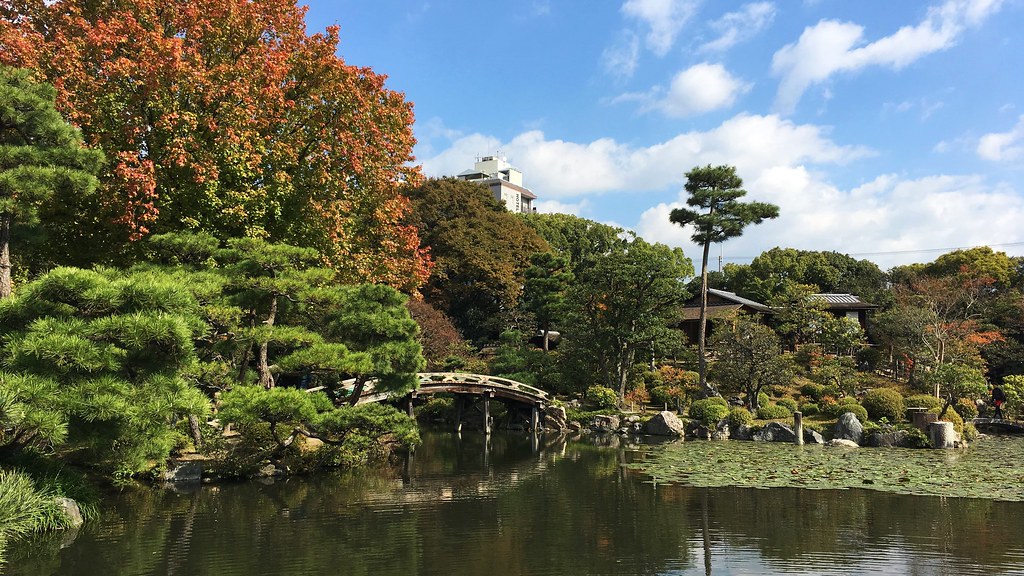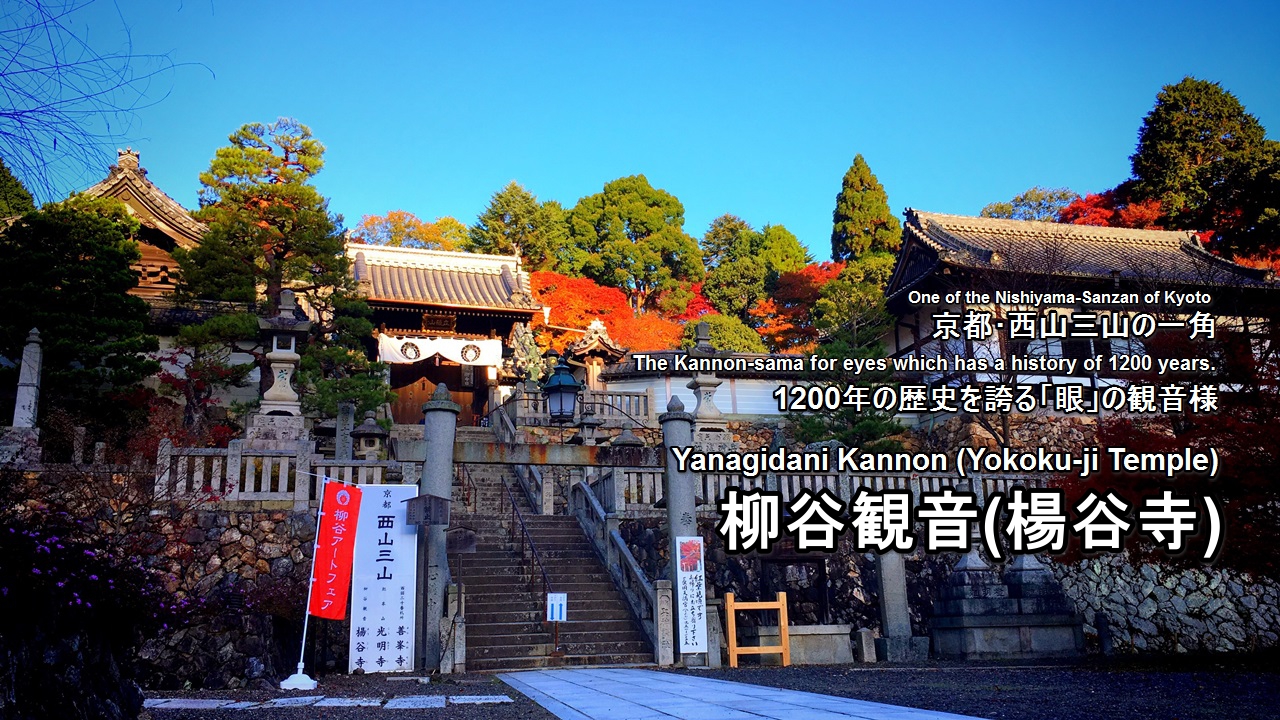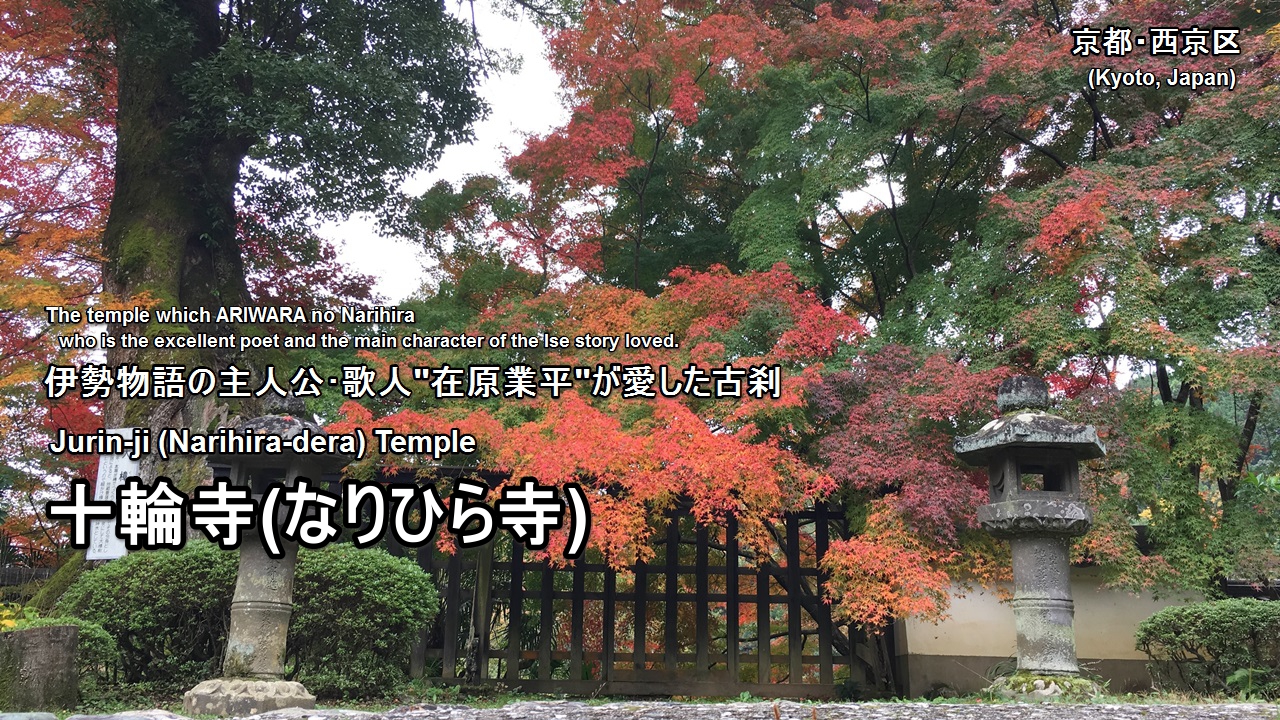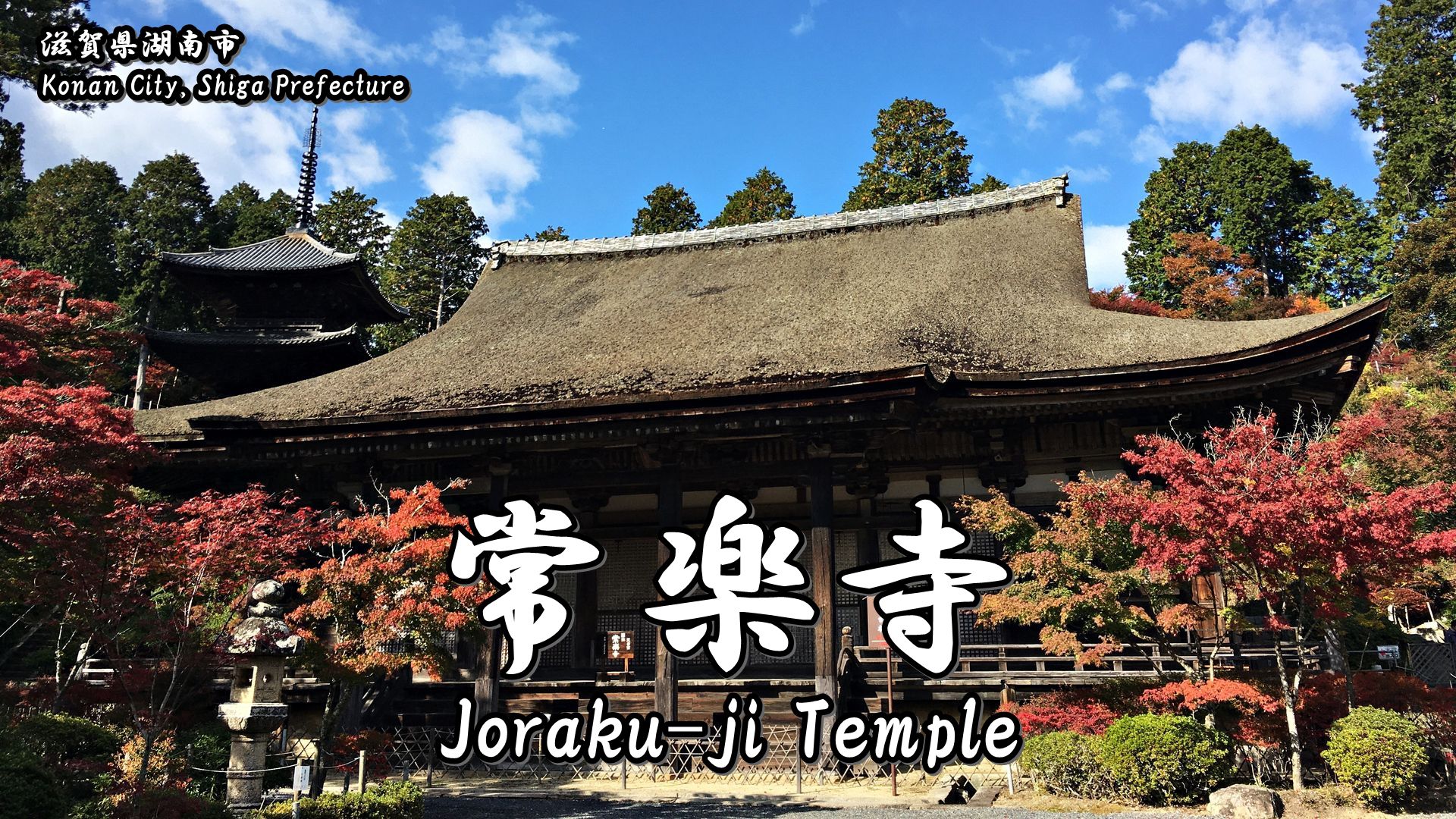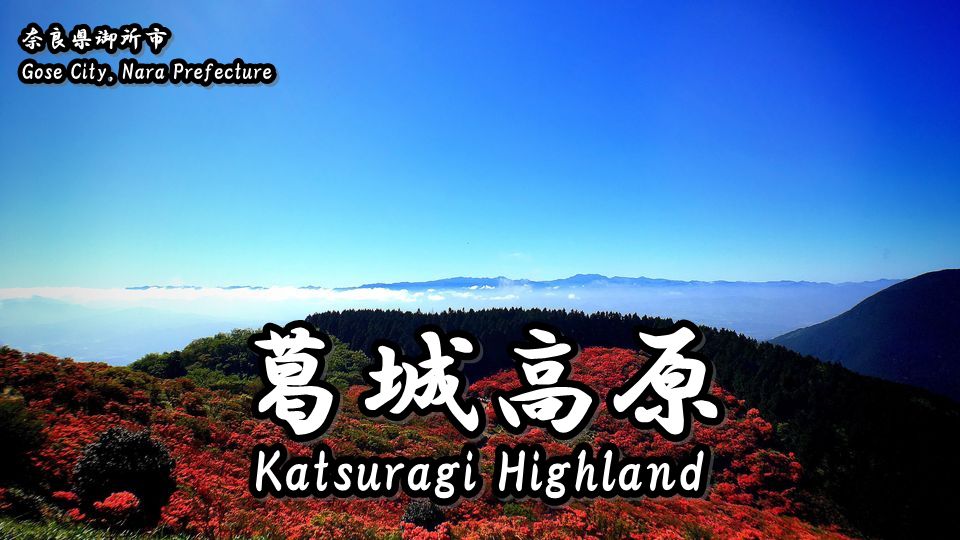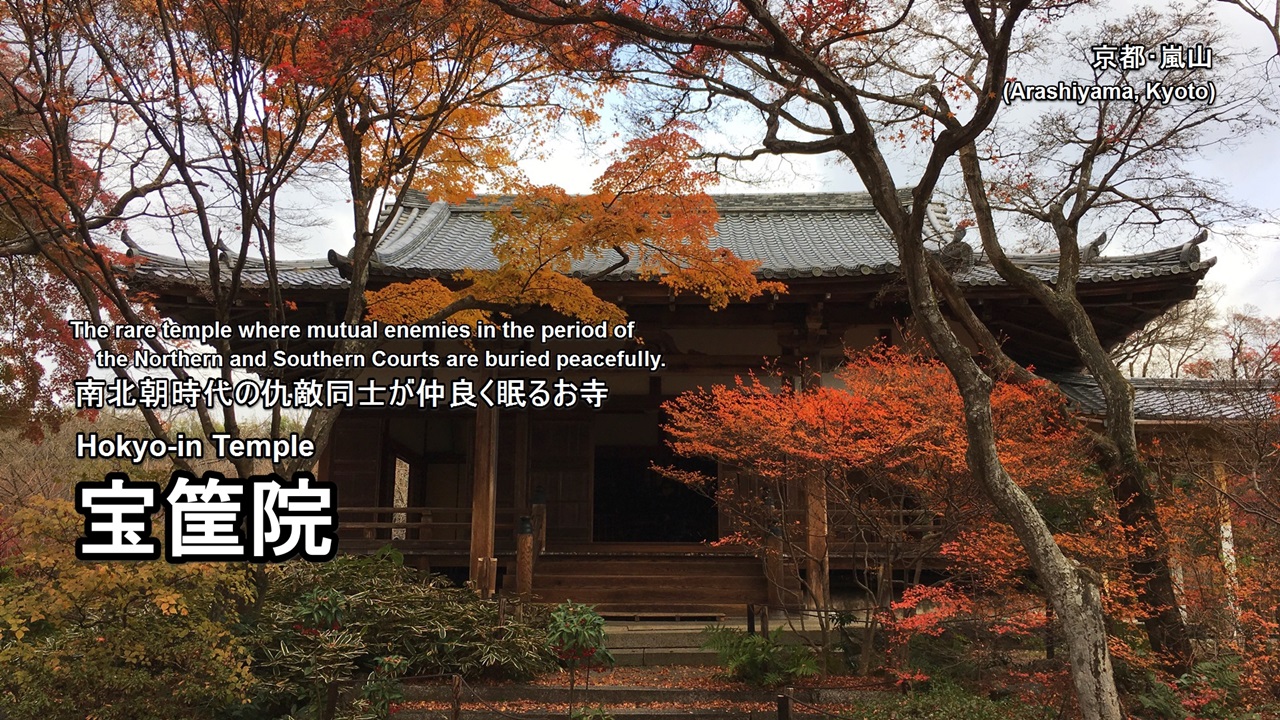Shosei-en Garden is a detached landholding in Shimogyo-ku Ward, Kyoto City, Kyoto Prefecture that belongs to Shinshu Honbyo (Higashi Hongan-ji Temple).
The garden’s name is derived from one phrase of the Chinese poetry ‘園日渉而成趣(Yuan ri she er cheng qu)’ (The garden becomes more venerabl and stately day by day) written by TAO Yuanming who was the poet of Chinese Six Dynasties period.
‘園日渉而成趣(Yuan ri she er cheng qu)’ has a meaning of ‘The garden where the garden’s attraction increases every day.’
Because Shosei-en Garden once had the hedge of the 枳殻 (trifoliate orange), it is also called “枳殻亭(Kikoku-tei)”.
Inside this garden, there is the big garden of Chisen-kaiyushiki-teien style (a stroke-style garden around a big pond), and it is designated as a places of scenic beauty.
So, I went to the Shosei-en Garden this time.
Contents:
- History of the Shosei-en Garden
- About the Shosei-en Garden
- Visitor Information
- The highlights of Shosei-en Garden
- The photos of Shosei-en Garden
- How to get to the Shosei-en Garden
1.History of the Shosei-en Garden
Let’s study this garden’s history with me before introducing the Shosei-en Garden.
I think that we can enjoy the sightseeing of this garden still more by learning the history. (○´艸`)
Shosei-en Garden is a detached landholding that belongs to Shinshu Honbyo (Higashi Hongan-ji Temple).
And, Higashi Hongan-ji Temple is the temple which has been protected by the Tokugawa clan.
Please refer to the following articles for more information about the origins of Hongan-ji Temple.
Those days when Higashi Hongan-ji Temple was built, Nishi Hongan-ji Temple had an excellent garden, but Higashi Hongan-ji Temple did not have it.
Because Higashi Hongan-ji Temple and Nishi Hongan-ji Temple are not so good relationship for a long time, they don’t want to lose to each other.
Therefore, Iemitsu TOKUGAWA who was the third Shogun of the Tokugawa family was donated this garden’s site to Higashi Hongan-ji Temple in 1641 of the Edo period.
And this garden was made into a stroll garden incorporating shoin-shiki (study room style) architecture by Jozan ISHIKAWA who was a famous garden designer of the Edo period in 1653.
The Tokugawa clan’s face affected the origins of this garden.
Afterwards, this garden was used as a place where the chief priest secluded or guests from foreign countries were treated and it played a major role as a detached landholding of Higashi Hongan-ji Temple.
By the way, because Higashi Hongan-ji temple had 4 great fires in the Edo period, it acquired the nickname, “Flaming Hongan-ji Temple”.
This garden also had 2 great fires in the late Edo period.
For that reason, the current buildings were rebuilt in the late Edo period and the early Meiji period.
Wow! Certainly Higashi Hongan-ji Temple deserved its name of “Flaming Hongan-ji Temple.”
2.About the Shosei-en Garden
Open:9:00-17:00(March – October), 09:00-16:00(November – February)
Admission Fee:500 yen or more
Address:Shomen-dori Ainomachi Higashi-iru, Shimogyō-ku, Kyoto 600-8190, Japan
Phone Number:+81-075-371-9210(Higashi Hongan-ji)
Created year:1653
Author:Jozan ISHIKAWA
Shosei-en Garden is a detached landholding in Shimogyo-ku Ward, Kyoto City, Kyoto Prefecture that belongs to Shinshu Honbyo (Higashi Hongan-ji Temple).

This garden is designated as a places of scenic beauty in 1936.
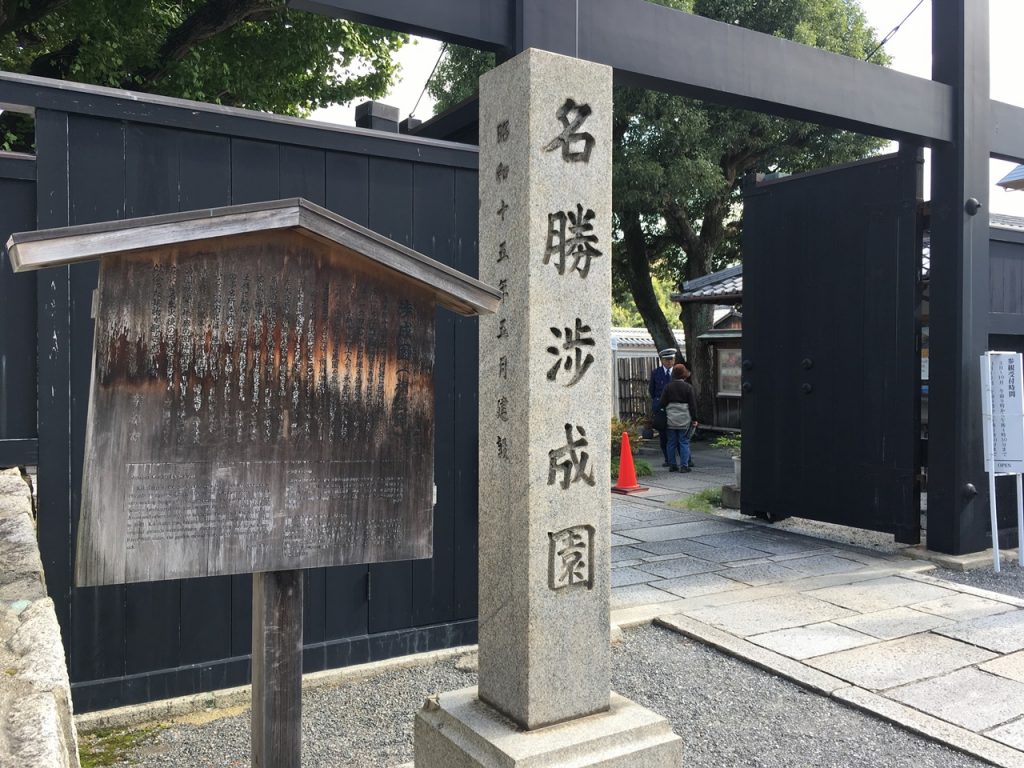
This garden was made into a stroll garden incorporating shoin-shiki (study room style) architecture by Jozan ISHIKAWA who was a famous garden designer of the Edo period in 1653.

There are many modern structures and highlights in this garden.
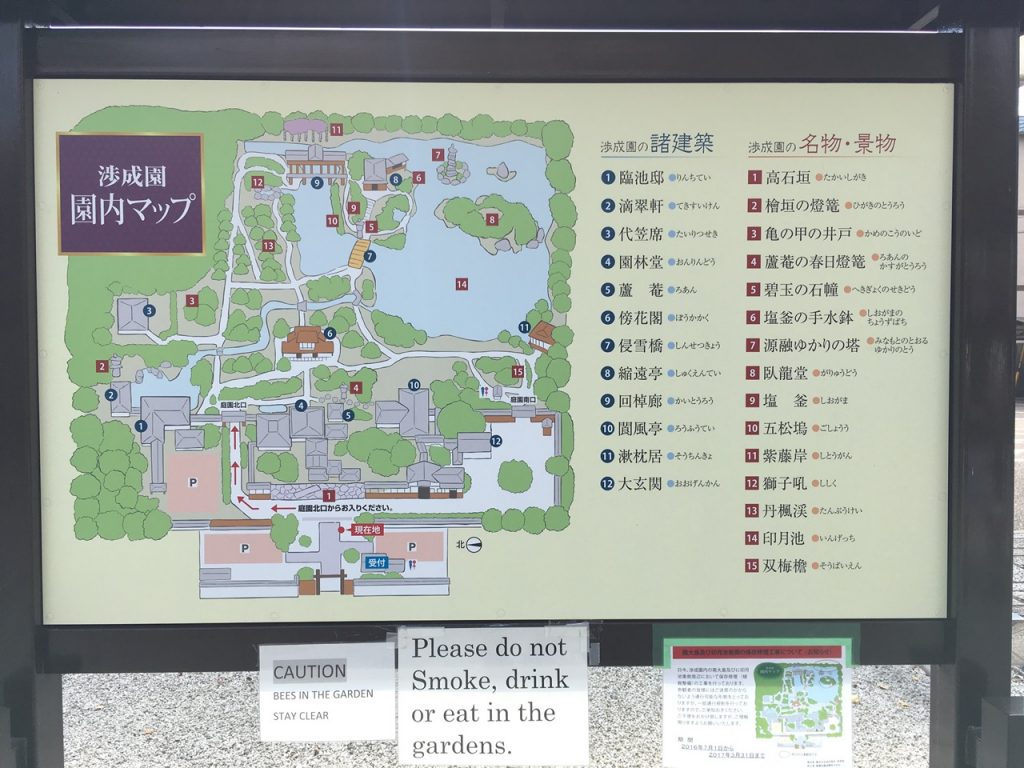
An admission fee is 500 yen or more.
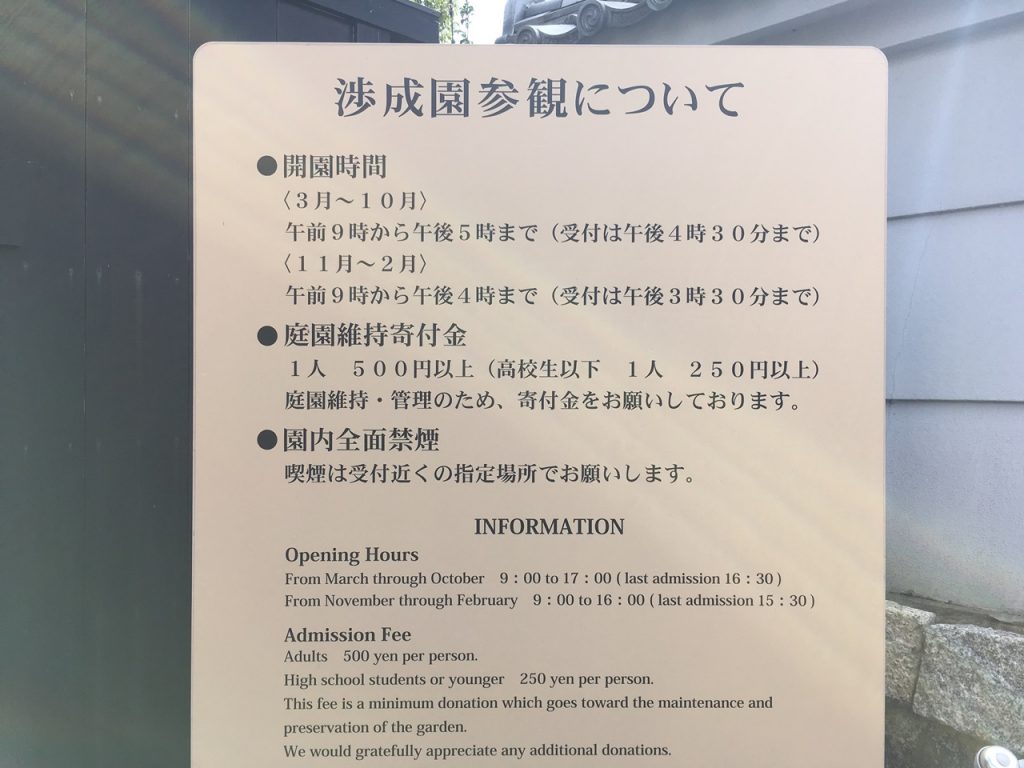
We can get a brochure of the full color when we pay an admission fee.

3.Visitor Information
・In November, there is a Autumn Special Exhibition.
(We can watch the inside of the building in this period which we cannot watch usually.)
・Photography and video recording are prohibited inside the building.
Let’s follow a rule.
4.The highlights of Shosei-en Garden
- 高石垣:Taka-ishigaki(High Stone Wall)
- 臨池亭:Rinchi-tei
- 滴翠軒:Tekisui-ken
- 大笠席:Tairitsu-seki
- 亀の甲の井戸:Turtle stone Spring
- 傍花閣:Boka-kaku
- 園林堂:Onrin-do
- 蘆菴:Ro-an
- 閬風亭:Rofu-tei
- 印月池:Ingetsu-chi Pond
- 漱沈居:Souchinkyo
- 臥龍堂:Garyu-do
- 源融ゆかりの塔:Memorial of Minamoto-no-Toru
- 侵雪橋:Shinsetsu-kyo Bridge
- 碧玉の石幢:Hekigyoku-no-sekido
- 塩釜:Shiogama
- 縮遠亭:Shukuen-tei
- 塩釜の手水鉢:Shiogama-no-chozu-bachi
- 回棹廊:Kaito-ro
- 大玄関:O-genkan
●高石垣:Taka-ishigaki(High Stone Wall)
This is the high stone wall which is called ‘Taka-ishigaki.’
If we look closely, there is a millstone in this wall.
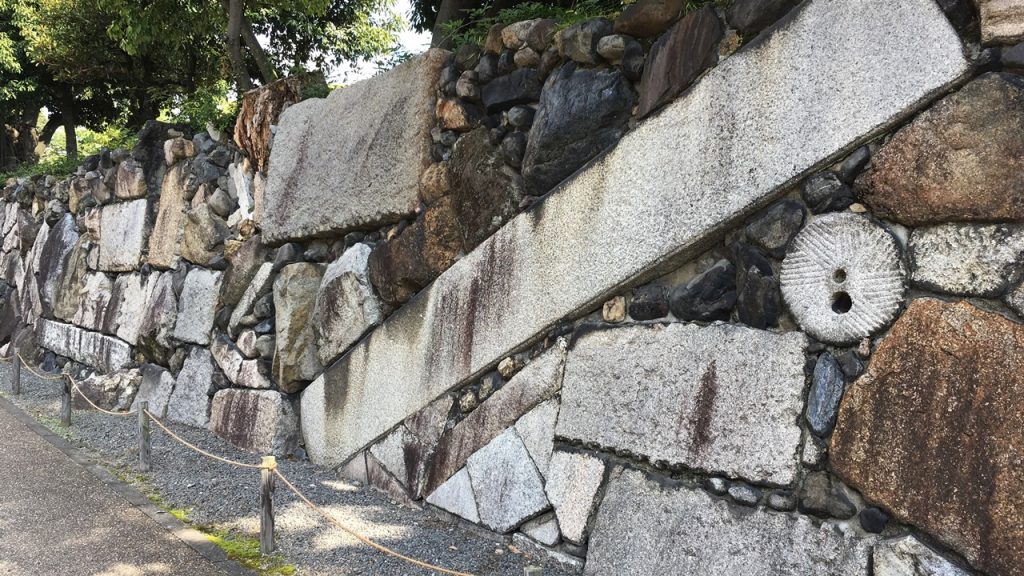
●臨池亭:Rinchi-tei
This is the Rinchi-tei rebuilt in 1884 of the Meiji period.
This building has a role as a visitor’s tea room.

●滴翠軒:Tekisui-ken
This is the Tekisui-ken rebuilt in 1884 of the Meiji period.
This building also has a role as a visitor’s tea room.
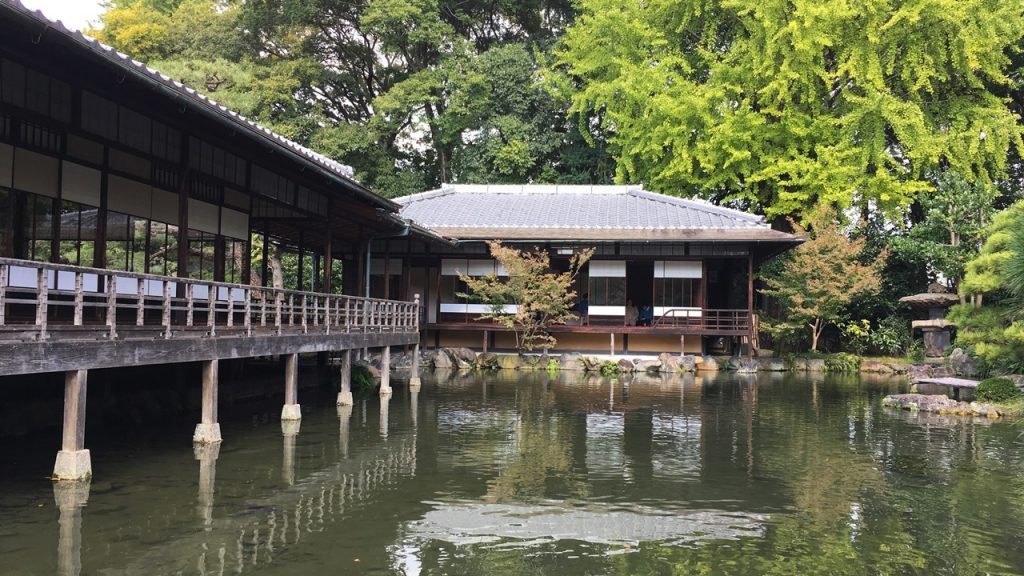
●大笠席:Tairitsu-seki
This is the Tairitsu-seki rebuilt in 1888 of the Meiji period.
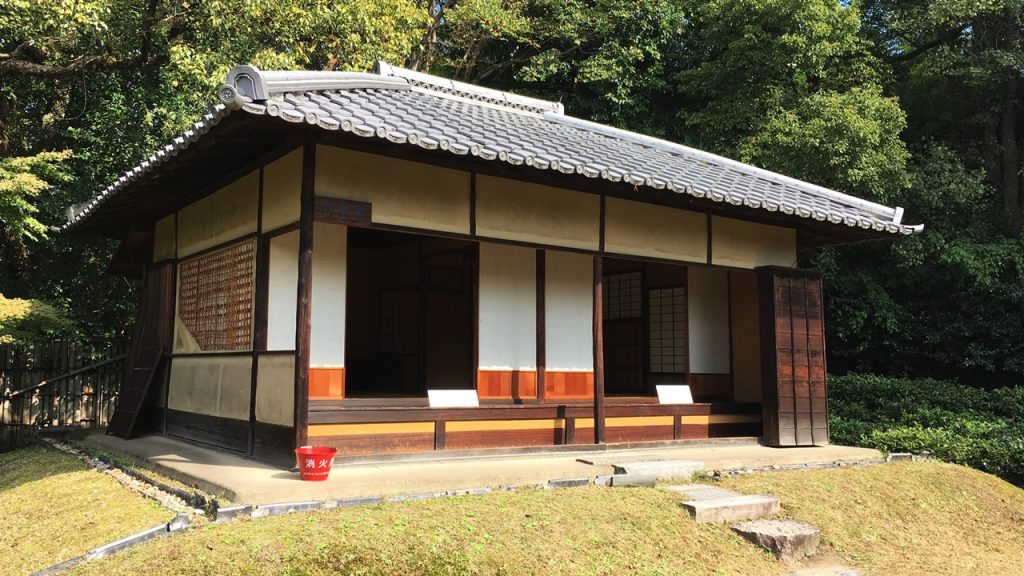
This building has a role as a tea ceremony house.
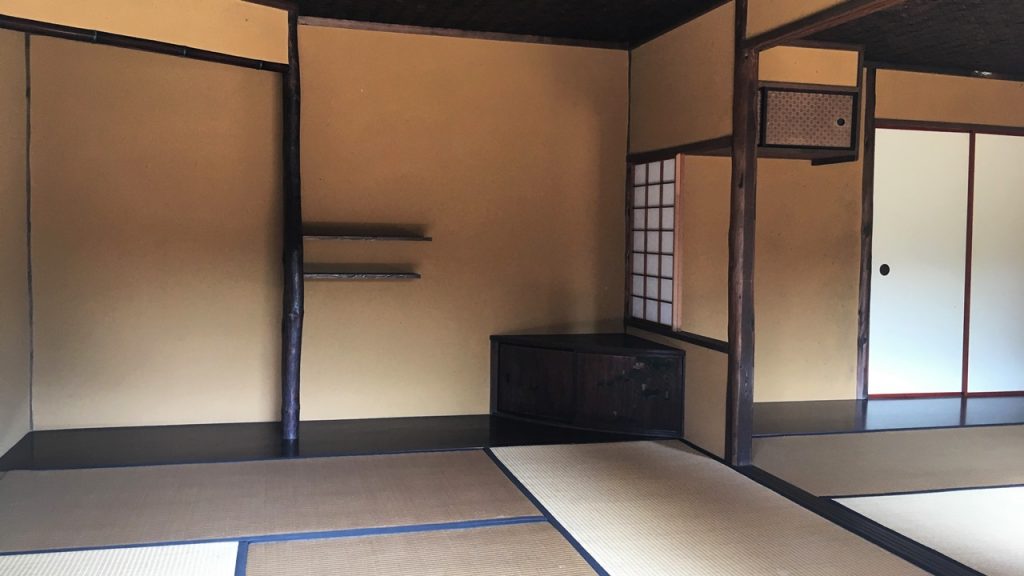
●亀の甲の井戸:Turtle stone Spring
This is a well having a shape of the turtle which is called ‘Turtle stone Spring.’

●傍花閣:Boka-kaku
This is the Boka-kaku rebuilt in 1892 of the Meiji period.
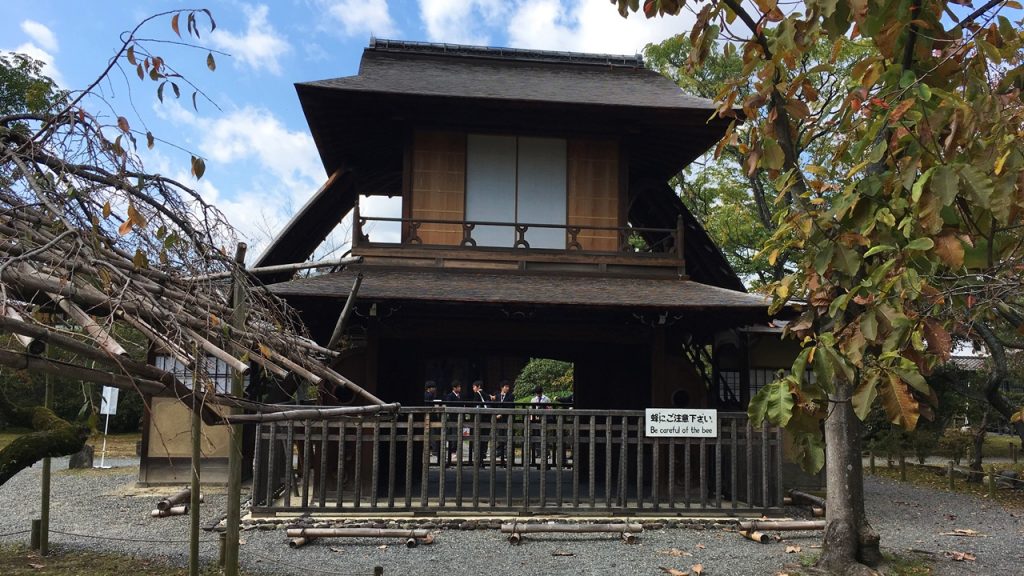
This building is a very unique-shaped multi-storied building.

●園林堂:Onrin-do
This is the Onrin-do rebuilt in 1957 of the Showa period.
The Fusuma-e (Painting on a sliding screen) which is the works of Shiko MUNAKATA who is the foremost woodblock artist of Japan is displayed in this building.
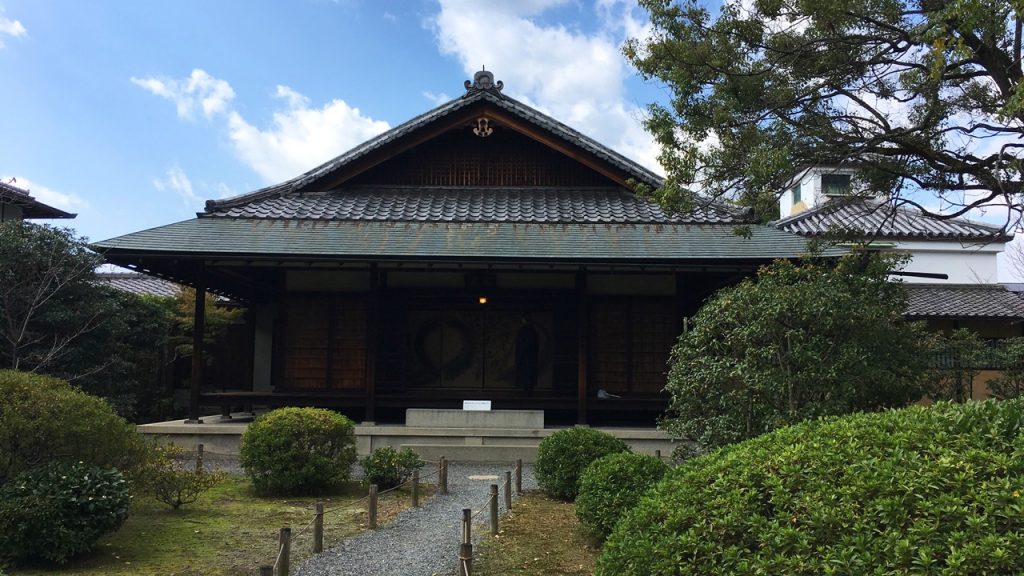
●蘆菴:Ro-an
This is the Ro-an which is a a two storey tea ceremony house rebuilt in 1957 of the Showa period.

●閬風亭:Rofu-tei
This is the Rofu-tei rebuilt in 1865 of the late Edo period.
This building is one of the oldest building in this garden.

This building has a role as a guest house for guests of the national government.
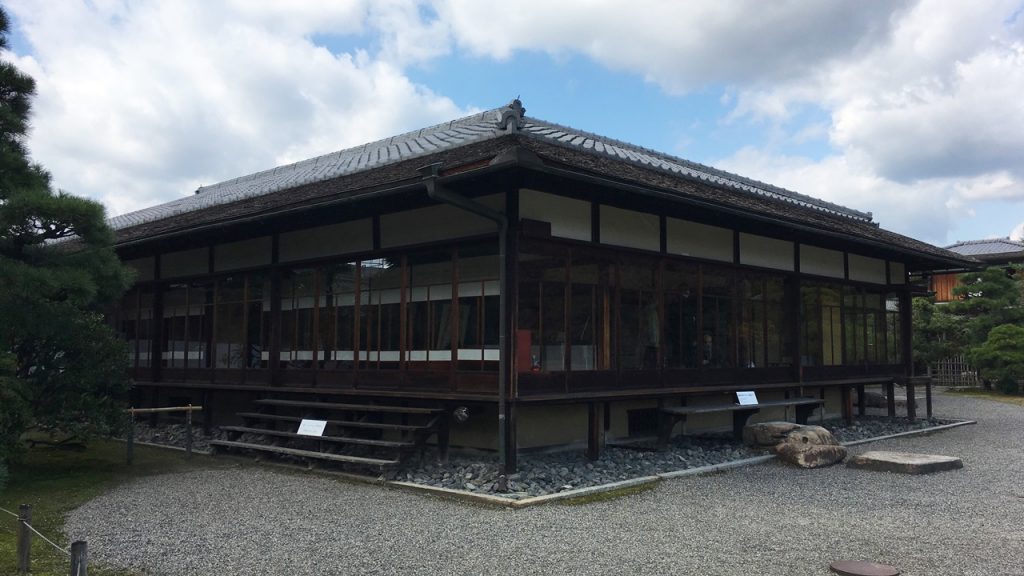
●印月池:Ingetsu-chi Pond
This is the Ingetsu-chi Pond which is the center of this garden.
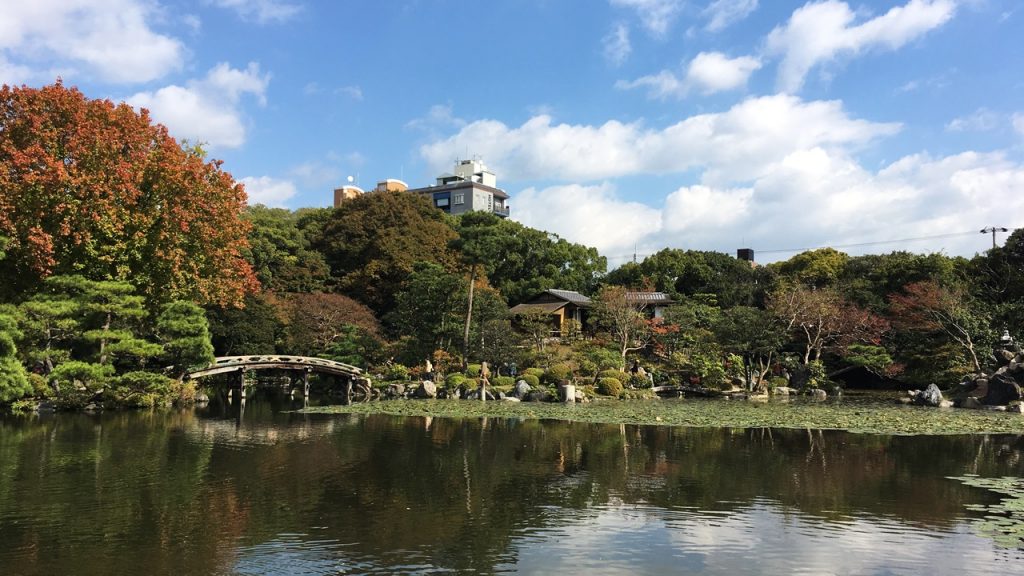
The name of ‘Ingetsu-chi’ comes from the fact that the moon reflected in this pond at night is very beautiful.

●漱沈居:Souchinkyo
This is the Souchinkyo rebuilt in 1865 of the late Edo period.
This building is one of the oldest building in this garden.
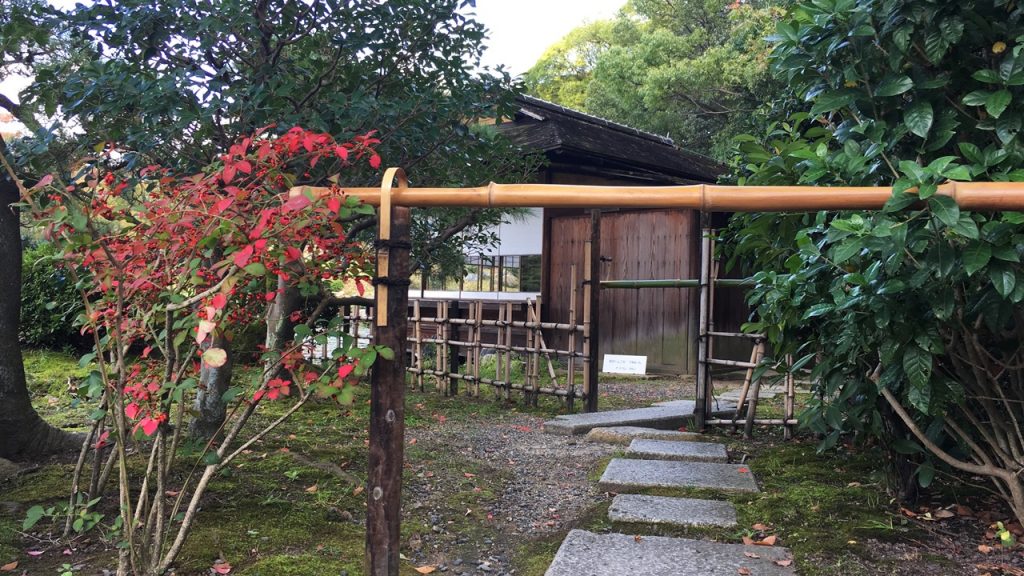
This building is built near the Ingetsu-chi pond.
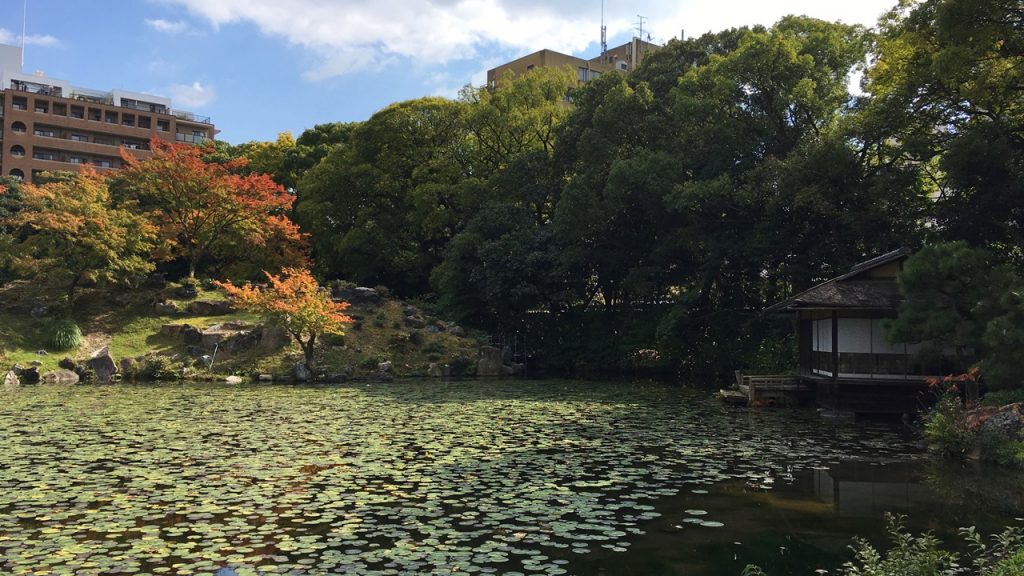
●臥龍堂:Garyu-do
In old days, there was the temple called ‘Garyu-do‘ in the island of this pond.
Therefore, this island is also called Garyu-do.

●源融ゆかりの塔:Memorial of Minamoto-no-Toru
This garden is also said to be the remained site of Kawarano-in whish was the residence of MINAMOTO-no-Toru who is considered to be one of the models for Hikaru GENJI, the main character in “The Tale of Genji” by Murasaki Shikibu.
This pagoda is said to be the memorial tower of MINAMOTO-no-Toru.
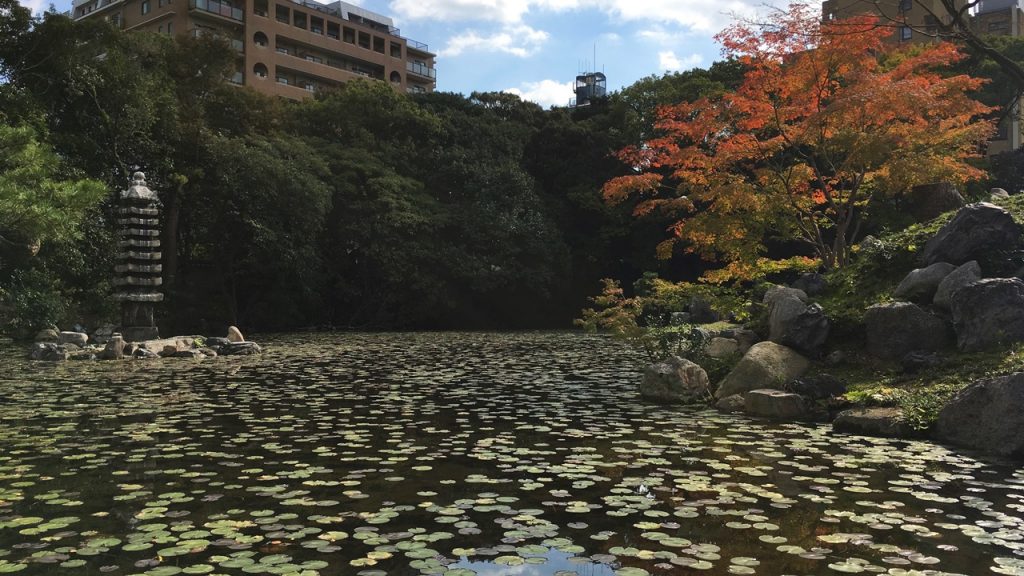
●侵雪橋:Shinsetsu-kyo Bridge
The bridge built over this pond is called ‘Shinsetsu-kyo Bridge.‘
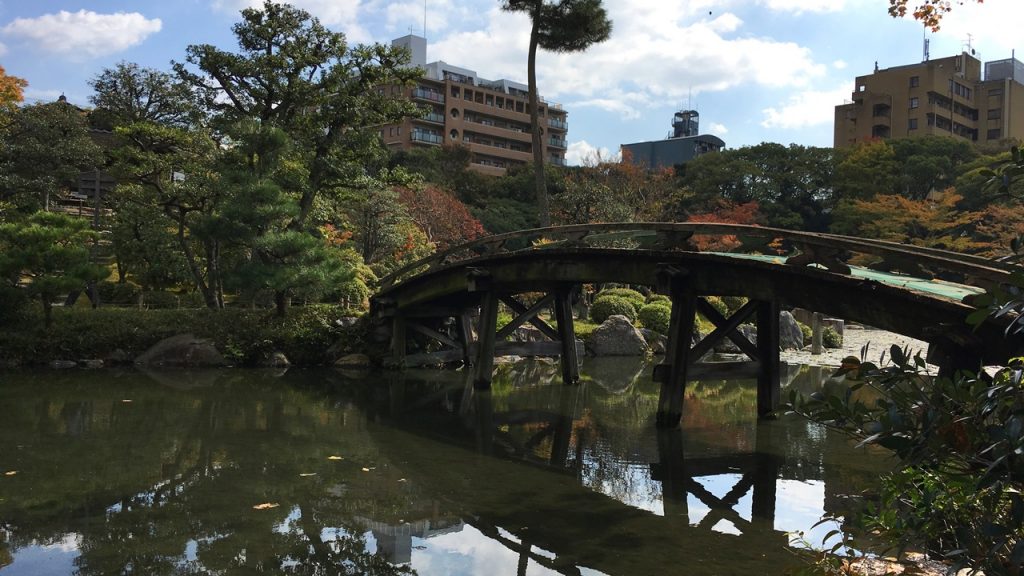
Kyoto Tower is reflected in the surface of the water and is very beautiful.
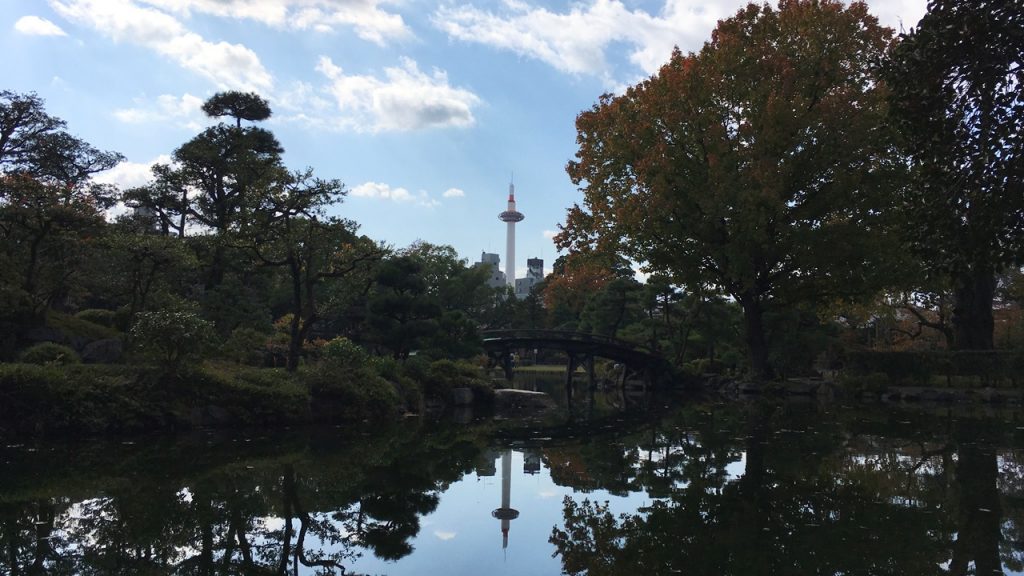
●碧玉の石幢:Hekigyoku-no-sekido
This is a stone garden lantern which is called ‘Hekigyoku-no-sekido.’
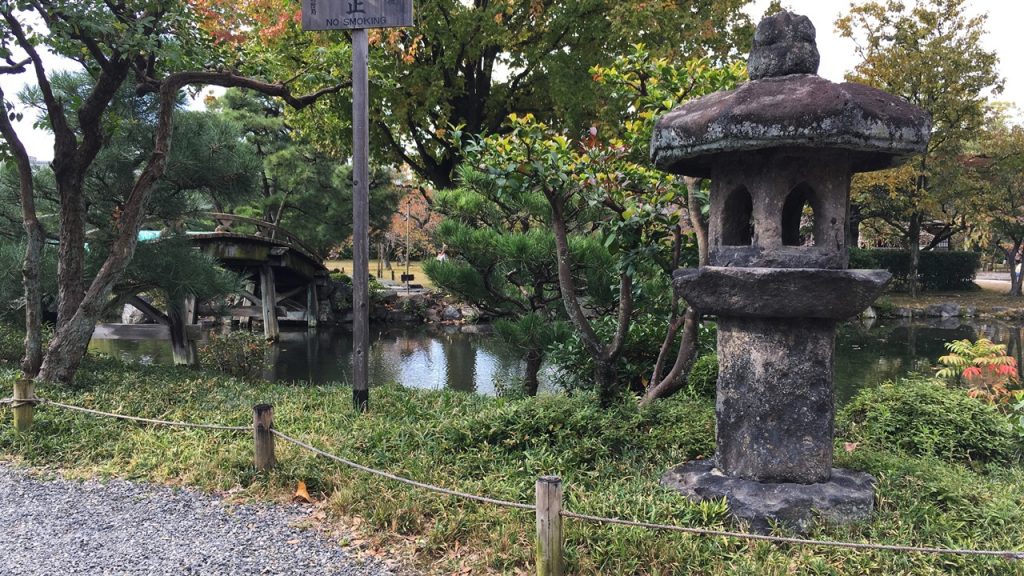
●塩釜:Shiogama
This is a well dug at the cave of an artificial hill.
Because this well has a shape of Shiogama (salt pan), is called Shiogama.
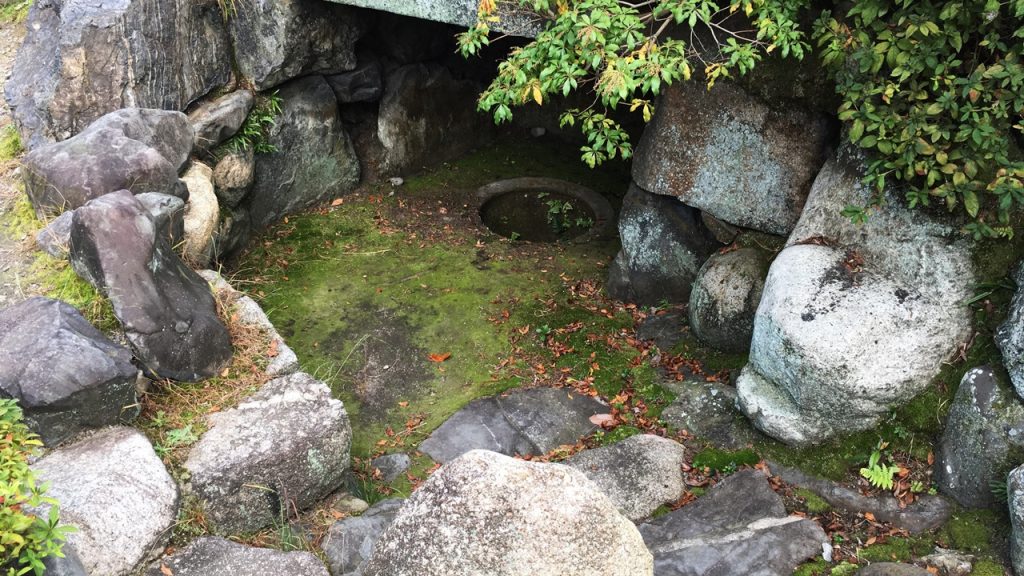
●縮遠亭:Shukuen-tei
This is the Shukuen-tei rebuilt in 1884 of the Meiji period.
This building has a role as a tea ceremony house.

This building is built in the top of the artificial hill.
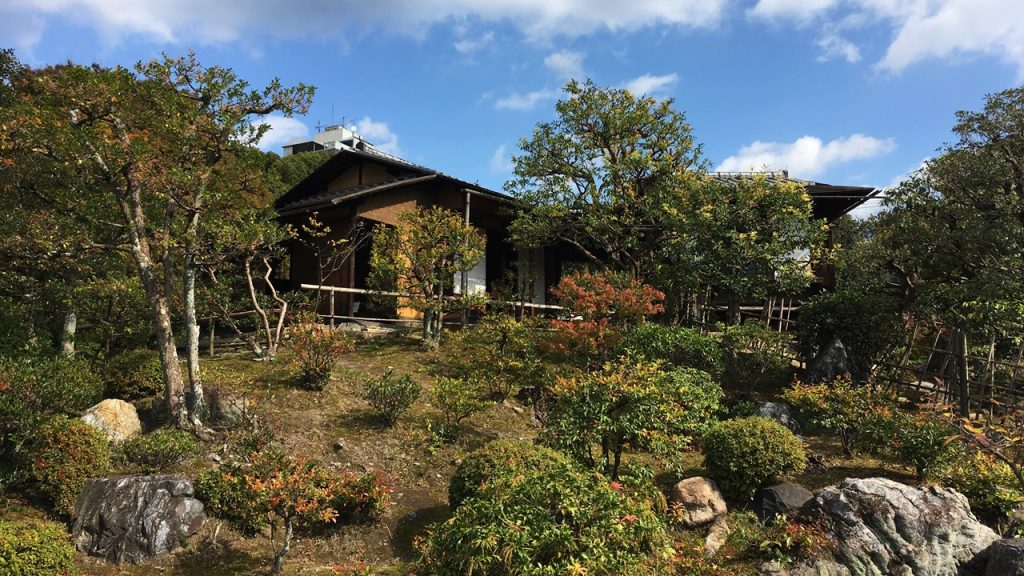
●塩釜の手水鉢:Shiogama-no-chozu-bachi
This is the chozubachi called ‘Shiogama-no-chozu-bachi.’
This is so-called one of the art objects of garden.
And this garden’s one is the original of other gardens one.

●回棹廊:Kaito-ro
This is the Kaito-ro rebuilt in 1884 of the Meiji period.
This building has a role as a bridge.
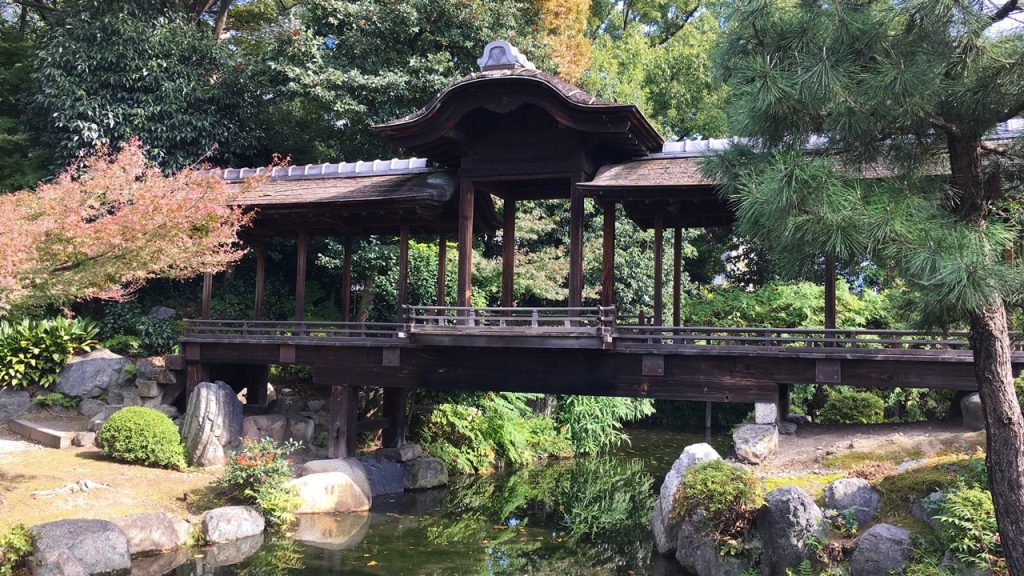
The roof of this gate is Hiwadabuki (roofs with the bark of hinoki, Japanese cypress).
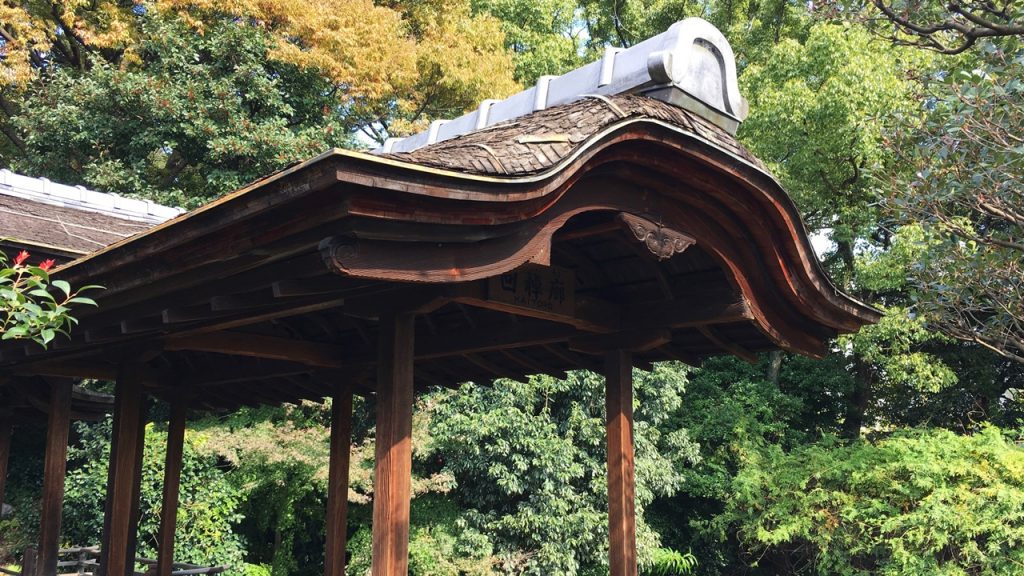
●大玄関:O-genkan
This is the O-genkan rebuilt in 1884 of the Meiji period.
This building has a role as a entrance of the Rofu-tei.
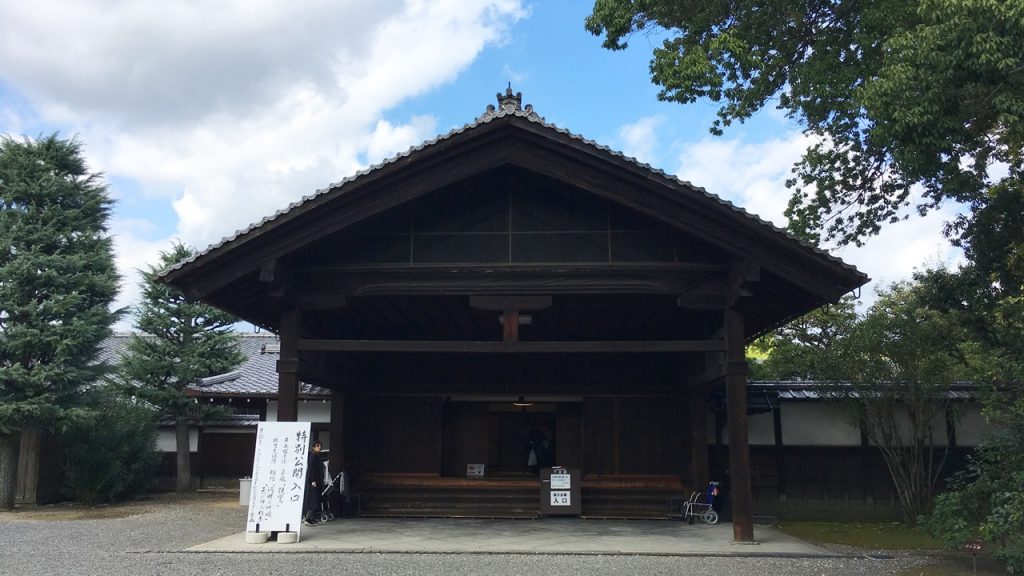
5.The photos of Shosei-en Garden
■Flickr:Photo of Shosei-en Garden (20161104)
6.How to get to the Shosei-en Garden
The nearest station of the Shosei-en Garden is “JR Kyoto station” or “Kyoto City Subway Gojo Station”
(We can also go by bus from “Hankyu Kawaramachi Station”, “Keihan Sanjo Station”.)
■Route Example (From Osaka station to Kyoto Station)

■Route Example (From Namba station to Kyoto Station)

■Kyoto Station→Shosei-en Garden
We go on foot from JR Kyoto Station to Shosei-en Garden.
It’s about 10 minutes (500m) on foot.
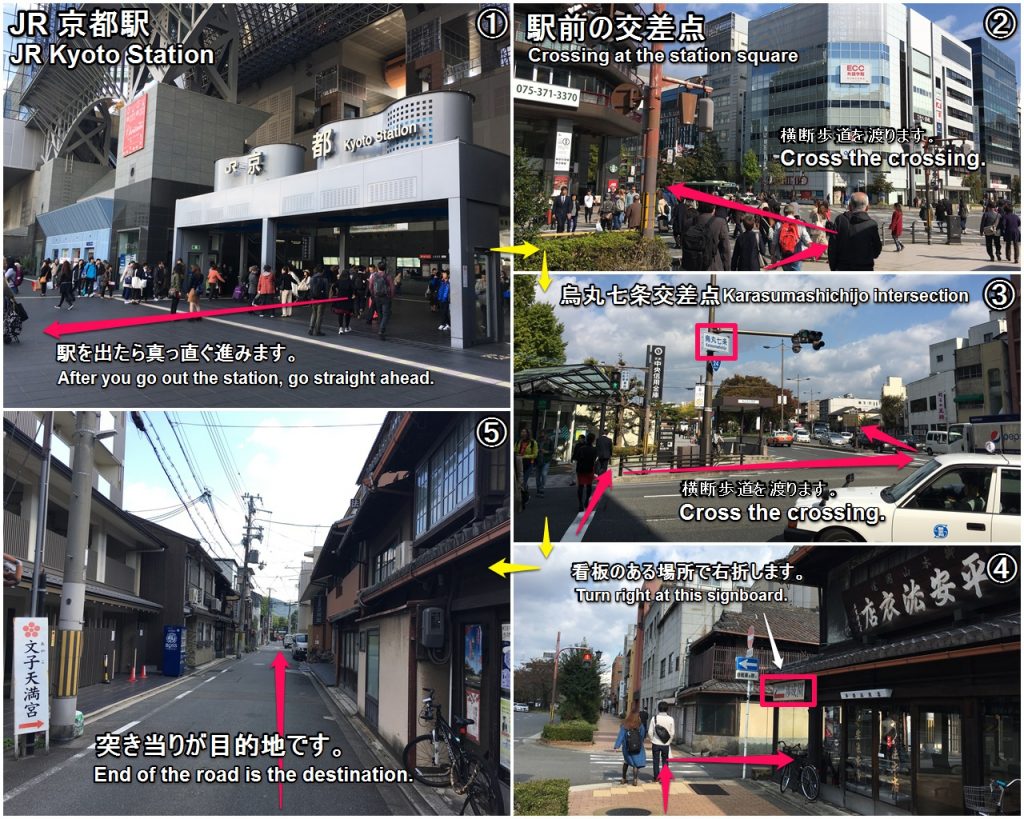
■When you get on a bus from Hankyu Kawaramachi Station
Timetable and Route Search of bus
[Timetable]Route No.5
Bus company:Kyoto City Bus
Routes/Destination:No.5[Bound for Kyoto Sta.]
Boarding bus stop:Shijo Kawaramachi[A]
Alighting bus stop:Karasuma Nanajo
Bus fare:230 yen
Time required:About 11 min
■When you get on a bus from Keihan Sanjo Station
Timetable and Route Search of bus
[Timetable]Route No.5
Bus company:Kyoto City Bus
Routes/Destination:No.5[Bound for Kyoto Sta.]
Boarding bus stop:Sanjo Keihan-mae[C3]
Alighting bus stop:Karasuma Nanajo
Bus fare:230 yen
Time required:About 16 min
■When you take a taxi
Let’s show a taxi driver the following phrase.
From Kyoto Station:About 3 minutes / 620 yen (You’d better go on foot.)
From Gion-Shijo Station:About 15 minutes / 1,260 yen
How did you like it?
Have a nice trip! ( *´艸`)


